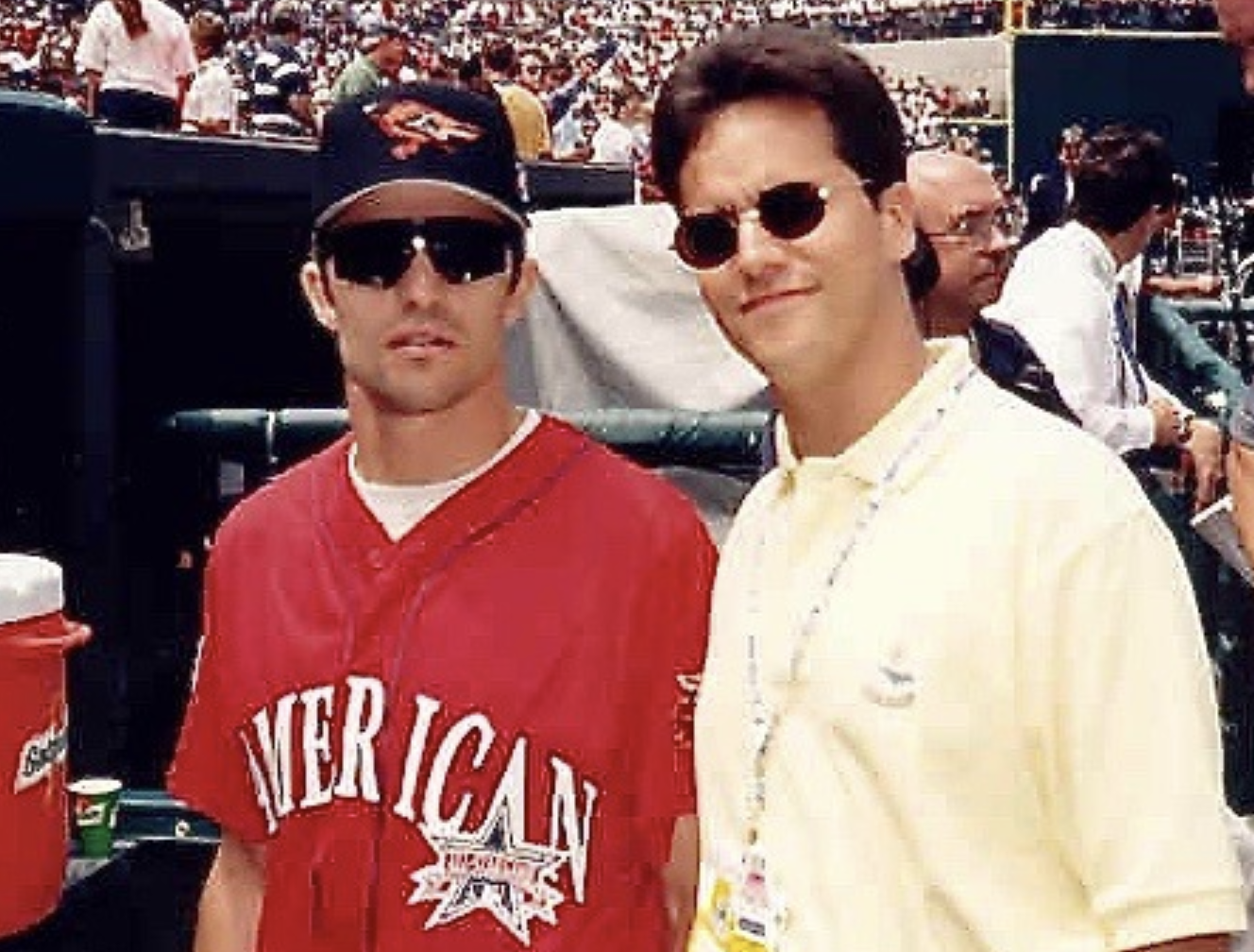11. Letting The Moose loose in pinstripes
“We’re not in the business of making arrangements with baseball players that border on economic insanity. We are in the business of putting a first-rate team on the field which is composed of athletes who are generously compensated. But when the demands of any one player or more than one player exceed what we believe to be reasonable, we are prepared to go in another direction. If we’re not able to do that, then we become the prisoners of the respective ballplayers. We aren’t going to do that. We don’t operate that way. We play fair. We pay generously. We pay what is generous and proper. I think $72 million to Mussina is plenty of money to Mussina.”
Peter G. Angelos
WBAL Radio
October 2000
THE PETER G. ANGELOS OBSESSION WITH INJURIES and medical reports was in full swing every offseason following the Xavier Hernandez incident in December 1998, when the journeyman pitcher walked away with $1.75 million of orange and black money without ever having to pull a jersey over his head. Angelos wasn’t just outraged and angry. He felt the Orioles had been fleeced and was once again feeling just how powerful the Major League Baseball Players Association was in the sport. In many ways, they employed even dirtier legal tactics then the word salad filth he was accustomed to with tobacco companies and asbestos cases in building his wealth.
The Orioles needed pitching heading into the 2000 season and big right-hander Aaron Sele was on the marketplace as a free agent. Thift and the Angelos boys, who were clumsily heading up the baseball evaluation for the Orioles, both liked his solid makeup and track record with the Boston Red Sox and then the Texas Rangers. He had won 37 games the past two years in Arlington and, at 29, was hitting the peak of his career. He finished strong at 10-3 for the Rangers and helped lead them – along with former Orioles manager Johnny Oates and GM Doug Melvin – to the American League West title in 1999. This was his first big chance to cash in on free agency and the Orioles were considered a prime suitor. Other starting pitchers Andy Benes, Omar Olivares and Darren Oliver were also on the market, but Sele would be a perfect fit for the No. 3 spot in the rotation behind Mike Mussina, who was entering his final year under contract to the Orioles, and Scott Erickson, who struggled in 1999.
On Jan. 7, 2000, Roch Kubatko of The Sun reported that Orioles had agreed with Sele on a four-year deal worth $29 million, with the veteran turning down a four-year deal for $28 million to remain in Texas. Thrift, who was only negotiating a portion of the club’s deals because Angelos always had his hands on the phone as well, told the newspaper, “There’s always the possibility of something not happening.”
Thirft’s words were prescient.
After agreeing verbally to the deal with the Orioles, Sele was administered a physical that the team said raised questions regarding the strength of his arm. Angelos demanded that two years be taken off of the deal. Angelos said that Orioles doctors believed that Sele only had 400 innings left in his right arm.
One of Sele’s agents, Tom Reich, told The Associated Press there was a difference on interpretation with the Orioles on medical tests. Sele had never undergone arm surgery, but missed most of 1995 with an arm injury. But that was five years earlier.
“The dealings with Baltimore were very cordial from beginning to end and it just didn’t work out,” Reich said. “To me, Peter Angelos is a good guy.” This was after his client lost $14 million in guaranteed money and was branded in MLB circles as “damaged goods.”
Two days later, Sele signed a two-year, $14.5 millon deal to pitch for his childhood hometown team, the Seattle Mariners. Once again, a former Angelos employee was involved.
“This thing is like a star falling out of the sky,” said new Mariners general manager Pat Gillick, who felt he got a bargain. “We’re satisfied Sele is as healthy as he was when he finished the season with the Rangers. He underwent a physical on behalf of us with another physician, and our physician talked with that doctor and is satisfied. There is going to be normal wear and tear. You really have to rely on your medical people. They know which bumps along the road you have to watch for and which you can work through.”
Of course, Gillick got in a nice shot on Angelos to the media at the Sele press conference 3,000 miles from Baltimore.
“I’m not aware of exactly the concerns were with Baltimore,” Gillick said. “I think there were some differences of opinion there. I think this is a business where timing is very important. You only have a very small window. You have to react very quickly. Those who hesitate, as they say, are lost.”
By now, the complaints about Angelos were long and varied from any of the long list of qualified baseball

































